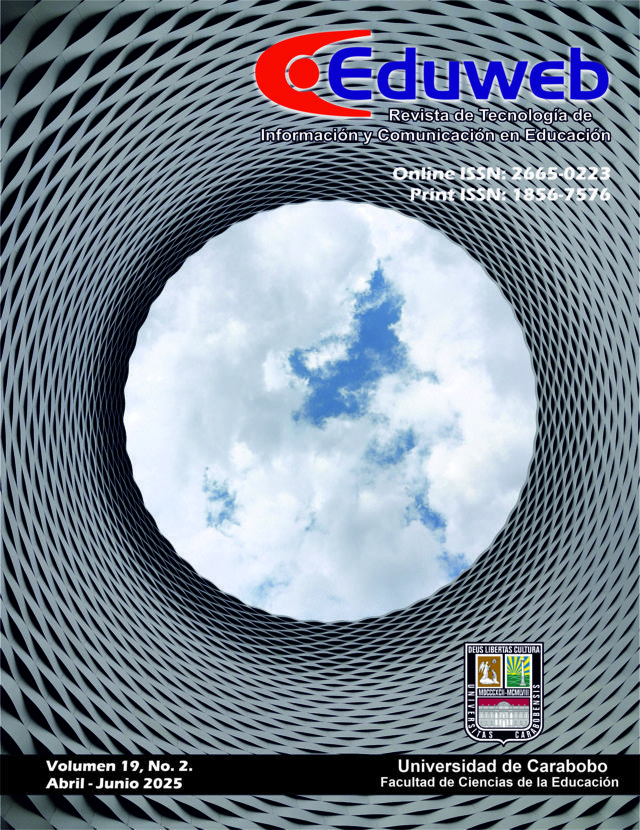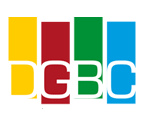Aplicación de métodos para desarrollar la audición musical y el ritmo en estudiantes no musicales de centros de enseñanza superior
DOI:
https://doi.org/10.46502/issn.1856-7576/2025.19.02.15Palabras clave:
Desarrollo de la audición musical, métodos de desarrollo, tipos de audición musical, carreras no musicales, instituciones de enseñanza superiorResumen
El objetivo de este estudio fue determinar el impacto de los ejercicios musicales en el desarrollo de las habilidades auditivas y rítmicas en estudiantes no musicales de IES. Prueba de las habilidades auditivas, el método un análisis comparativo para comparar los resultados de los estudiantes relacionados con la música y no relacionados con la música. Un cuestionario para evaluar la actitud de los estudiantes ante el proceso educativo mediante cuestionarios y comentarios. Los resultados del estudio confirmaron que la formación musical previa de los estudiantes tiene un impacto significativo en el desarrollo de sus habilidades auditivas. Los alumnos del grupo de control (GC), que ya contaban con muchos años de experiencia en la actividad musical, presentaron resultados elevados en las pruebas realizadas al inicio del estudio. Mostraron un aumento significativo de los indicadores. Por el contrario, los alumnos del grupo experimental (EG), que no tenían experiencia previa en el trabajo con material musical, partían de un nivel inferior. La formación musical previa desempeña un papel importante en los indicadores iniciales de las habilidades auditivas de los alumnos. Los resultados de las pruebas confirmaron que el GE logró el mayor éxito en el desarrollo de la audición musical. La novedad académica del estudio es la adaptación de los métodos existentes de desarrollo de la audición musical para estudiantes no musicales de IES.
Citas
Apaydın, Ö. (2023). Dalcroze method and rhythm in music education in Turkey: Dalcroze method in music education. International Journal of Curriculum and Instruction, 15(2), 1180-1196. Retrieved from: https://ijci.net/index.php/IJCI/article/view/1287
Astalos, A. (2023). Teachers' beliefs in general classroom and music specialists in Hungarian primary schools regarding the development of musical abilities in children. Studies in Music Education, 45(1), 112-126. https://doi.org/10.1177/1321103X221140283
Balde, A. M., Lima, K. F., & Schellenberg, E. G. (2025). The relationship between musical expertise and auditory processing. Journal of Experimental Psychology: Human Perception and Performance, 51(6), 747-763. https://doi.org/10.1037/xhp0001312
Bigl, A. (2022). Playing with orff and classroom instruments. General Music: Dimensions of Practice. Oxford Academic. 38-55. https://doi.org/10.1093/oso/9780197509012.001.0001
Colwell, K. (2022). Orff-based music therapy knowledge and training among students, clinicians, and educators. Approaches: An Interdisciplinary Journal of Music Therapy, 14(1). https://doi.org/10.56883/aijmt.2022.129
Correia, A. I., Vincenzi, M., Vanzella, P., Pinheiro, A. P., Lima, K. F., & Schellenberg, E. G. (2022). Can musical abilities be assessed online? Behavior Research Methods, 54(2), 955-969. https://doi.org/10.3758/s13428-021-01641-2
Coughlan, E. (2024). "Not a note in my head": Reflections on musical identity through Kodály-inspired community music therapy. Voices: A World Forum for Music Therapy, 24(3). https://doi.org/10.15845/voices.v24i3.4067
Daly, D. K. (2022). Creativity, autonomy, and Dalcroze eurhythmics: A study of arts practice. International Journal of Music Education, 40(1), 105-117. https://doi.org/10.1177/02557614211028600
de Oliveira Honório, P. (2023). Decision-making processes of undergraduate students not related to music for enrolling in string instrument and orchestra classes (Master’s thesis). Columbia: University of Missouri. Retrieved from https://acortar.link/Fvg1IA
Hou, J., Rattachaiwong, N., & Liu, L. (2024). Cultivating "bi-musicality" in sight-singing and ear-training education. Journal of Roi Kaen Sarn Academy, 9(2), 320-331. Retrieved from: https://so02.tci-thaijo.org/index.php/JRKSA/article/view/267728
Iaddings, L. B. (2024). Dalcroze eurhythmics: Origins, development, and considerations for choral programs. Visions of Research in Music Education, 46(1), 9. Retrieved from; https://digitalcommons.lib.uconn.edu/vrme/vol46/iss1/9/
Immerzeel, A., Nusseck, M., Hochagen, J., & Spann, K. (2024). Motivation of students to study music and sports – A comparison of subjects and curricula based on intrinsic and extrinsic motivational aspects. Frontiers in Psychology, 15, 1393339. https://doi.org/10.3389/fpsyg.2024.1393339
Jacques-Dalcroze, É. (1921). Rhythm, music and education. New York: G. P. Putnam's Sons.
Jones, E., Shaftel, M., & Chattah, J. (2013). Aural skills in context: A comprehensive approach to sight singing, ear training, keyboard harmony, and improvisation. New York: Oxford University Press.
Kimsanov, O. I. (2024). Development of musical abilities in students of children’s music and art schools. Pedagogical Cluster Journal of Pedagogical Developments, 2(2), 144-149. Retrieved from: https://euroasianjournals.org/index.php/pc/article/view/189
Kodály, Z. (1974). The Kodály method: Comprehensive music education from infant to adult. New Jersey: Prentice-Hall.
Kutlimuratovich, A. V. (2024). Use of Kodály method in music education. International Pedagogical Journal, 4(02), 63-67. https://doi.org/10.37547/ijp/Volume04Issue02-12
Li, Y. (2024). How music heard by students affects their level of musical literacy? A comparative analysis of musical literacy of Chinese students formed with the help of modern online technologies in the context of music and non-music academic disciplines. Interactive Learning Environments, 32(8), 4688-4702. https://doi.org/10.1080/10494820.2023.2205895
Lu, F., & Wang, H. (2025). Exploring the role of digital technologies in solfeggio and ear training pedagogy and memory. Interactive Learning Environments, 1-15. https://doi.org/10.1080/10494820.2025.2459185
Orff, C. (1963). The Schulwerk: Its origin and aims. Music Educators Journal, 49(5), 69-74. https://doi.org/10.2307/3389951
Pavlenko, O., Rastruba, T., Guseynova, L., Khomenko, L., Pelekh, K., & Koval, O. (2024). The role of modern computer technologies in forming professional competence of music teachers: A model of personalized educational environment. MOZOK. Broad Studies in Artificial Intelligence and Neuroscience, 15(1), 325-340. http://dx.doi.org/10.18662/brain/15.1/554
Sabadi, M. (2021). Interpretation and study of musical attitudes in music therapy within the pedagogical training of students. Eruditio-Educatio, 16(3), 14-25. Retrieved from: https://www.ceeol.com/search/article-detail?id=987125
Salim, M. N. M., & Maulana, H. (2023). Development of an ear sensitivity training game for intervals. International Journal of Informatics, Information Systems, and Computer Engineering (INJIISCOM), 4(1), 89-100. https://doi.org/10.34010/injiiscom.v4i1.9588
Senkal, O. A., & Mukhtar, Z. (2021). Role of orff music therapy in improving auditory processing skills in children with intellectual disabilities. Nigerian Journal of Clinical Practice, 24(7), 1005-1014. https://doi.org/10.4103/njcp.njcp_410_20
Stillie, B., & Moir, Z. (2021). Good pair of ears: The inception and development of listening skills in popular music education. In Cleland, K., & Fleet, P. (eds.) Routledge companion to ear-training pedagogy (pp. 179-189). New York: Routledge. https://doi.org/10.4324/9780429276392
Tkatchova, N. O., Popova, O. V., & Kin, O. M. (2023). Application of creative works by K. Orff, Z. Kodály, E. Jacques-Dalcroze in musical pedagogy of the people's Republic of China. Innovative Pedagogy, 57(2). https://doi.org/10.32782/2663-6085/2023/57.2.3
Valasi, S. (2023). The crucial role of rhythm in the Orff system: A comprehensive analysis. Knowledge - International Journal, 60(5), 807-810. Retrieved from: https://www.ceeol.com/search/article-detail?id=1265998
Van der Merwe, L. (2025). The theory of joyful experiences in Dalcroze eurhythmics. International Journal of Qualitative Studies on Health and Well-being, 20(1), 2468050. https://doi.org/10.1080/17482631.2025.2468050
Yan, H. (2025). Features of the development of students' musical skills under the influence of modern software. International Review of Research in Open and Distributed Learning, 26(1), 118-134. https://doi.org/10.19173/irrodl.v26i1.7977
Zhang, Y., Bails, F., & Prieto, P. (2024). Embodied music training can help improve speech imitation and pronunciation skills. Language Teaching, 1-23. https://doi.org/10.1017/S0261444824000363
Descargas
Publicado
Cómo citar
Número
Sección
Licencia
Derechos de autor 2025 Serhii Kachurynets, Olena Yefimchuk, Iryna Fedorovska, Victoriia Yunda, Iryna Maidaniuk

Esta obra está bajo una licencia internacional Creative Commons Atribución 4.0.















